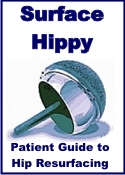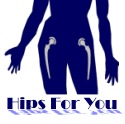|
|
||||||||||||
| |
Joint Replacement and the Golfer As my own hairline goes the way of the buffalo and my beltline gradually expands, I take comfort in knowing that as I approach my fifties I have plenty of company - particularly on the golf course. Studies show that there are about six million U.S. golfers over the age of fifty. Unfortunately, older players can be afflicted with various medical conditions that might make playing golf painful or even dangerous. From an orthopedic point of view, arthritis of the hip and knee are common and painful problems that can ruin an otherwise good day of golf. Osteoarthritis usually develops slowly, taking years to show symptoms and be visible on X-rays. Early complaints may include an ache or a twinge of discomfort in the joint with activity (such as golf) or with weather changes. (No, your Aunt Sadie wasn't crazy when she used to announce at the dinner table that she could tell it was going to rain soon because her knees were acting up.) In its late stages, osteoarthritis of the hip and knee can render an otherwise healthy person unable to perform common daily activities such as walking, sleeping, or heaven forbid, playing golf. There are lots of nonsurgical treatment options for arthritic joints including rest, weight loss, medication, physical therapy, and injection treatments. These measures are usually the first course of action to combat the pain and stiffness of arthritis. Total joint replacement�prosthetic replacement of the arthritic hip, knee�is the ultimate surgical treatment for advanced arthritis that does not respond to nonsurgical measures. Simply put, a total joint prosthesis replaces the damaged joint surfaces (the knee hinge or the hip ball-and-socket) with a device made from various combinations of metal and plastic. While total joint replacement represents a great advance in medical science, it is important to remember that the replacement is not a normal joint. Complications such as premature wear of the metal and plastic components or loosening of the prosthesis frequently require revision of the prosthesis�a technically demanding procedure that all orthopedic surgeons want to avoid whenever possible. Surgeons and biomechanical researchers are continually trying to identify what factors hasten the loosening and/or premature mechanical failure of total joint prostheses. The key question for us golfers, then, is whether golf represents a "risky" behavior after a total hip or knee replacement. So far, the answer is encouraging. Let's start with total hip replacement. Well, I have scoured the medical literature for you, and I have good news! One survey of the Hip Society (a sort of orthopedic club made up of surgeons who are experts in hip replacement surgery) was recently published where the surgeons were asked their views regarding the role of golf and their hip replacement patients. The results should be a delight to sore-hipped golfers everywhere: - None of these surgeons prohibited his patients from playing golf after hip replacement - None of these surgeons reported that their golfing patients had higher complication rates than nongolfing patients - Many of these surgeons did recommend a three-to-four month healing period after surgery before returning to golf. Starting slowly with easy chipping and putting was recommended before returning to full swing play - About seven out of ten of these surgeons advised the use of a cart for their patients when they did resume play Another survey published in the medical literature questioned professional golfers and active amateur players who had returned to golf after having a hip replacement. The news is again good: - All the professional golfers reported that they were able to continue playing and teaching golf after their surgery without problems - More than ninety percent of the amateurs responded that they had no hip pain when they played golf. All the remaining golfers who reported some degree of hip pain during golf noted that they still had less pain than they did before the hip replacement An identical survey of the members of the Knee Society was conducted to evaluate how experienced knee replacement surgeons viewed our beloved sport. Again, the news was good: - Some 93 percent of the surgeons responded that they did not object to their patients playing golf after knee replacement surgery - Each surgeon responded that every patient of theirs who expressed a desire to return to golf was able to do so after total knee replacement surgery - None of the surgeons reported a higher complication rate among patients who returned to golf after total knee replacement surgery - However, more than three-quarters of the surgeons recommended the use of a golf cart after surgery and at least three months of recovery time was advised postoperatively, before a return to golf Total knee recipients, both professional teachers and serious amateurs were also surveyed: - The pros said they were able to play and teach golf unhindered by their total knee replacement - Some 90 percent of the amateurs were able to play golf without pain. The remaining players had some pain in their knee during golf, but less pain than they had before surgery. Admittedly, the available surveys and studies linking golf and its effect on total joint replacement of the hip and knee are not supported by huge numbers of patients or decades of follow-up. Maybe some day we will have a Surgeon General who is both a golf nut and a total joint recipient. Then, perhaps a few zillion dollars can be allocated to do more in-depth research in golf medicine. Until then, we can take comfort in the conclusions drawn from the studies that are now available: that golf seems to be a doctor-friendly, patient-friendly, and total joint-friendly activity. Please note: A more complete discussion of total hip, knee, and shoulder replacement surgery and golf is available in Chapter 14 of Dr. Divot's Guide to Golf Injuries. Any golfer who is contemplating joint replacement surgery is advised to read the chapter in its entirety. Also, be sure to discuss with your own surgeon your desire to return to golf after surgery so that an individualized plan can be devised for you with your own doctor. Dr. Divot Larry Foster, M.D., F.A.A.O.S., is a board-certified orthopedic surgeon and self-described golf nut. Trained at Columbia University and the Hospital for Joint Diseases in New York, Dr. Foster is the author of Dr. Divot's Guide to Golf Injuries - A Handbook for Golf Injury Prevention and Treatment. Written in a humorous "plain-English" style, Dr. Divot's Guide teaches the reader how to prevent and treat the most common golf injuries. Visit Dr. Divot's website at: www.doctordivotmd.com. Or call: 1-800-247-6553 ($19.95). Article Source: http://EzineArticles.com/?expert=Larry_Foster,_M.D. |
|
||||||||||
|
Web design by Patricia Walter
Copyright Knees For You 12/18/2006
This site is published by Joint Health Sites
LLC, which is solely responsible for its content. |
||||||||||||


